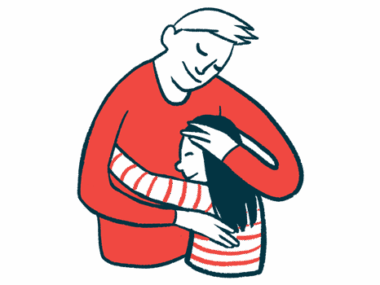Acadia working to see Rett therapy Daybue approved in Japan, Europe
Results from the two LILAC follow-up studies were recently published
Written by |

Daybue (trofinetide) last year became the first treatment for Rett syndrome to win approval from the U.S. Food and Drug Administration (FDA), and it’s currently up for approval in Canada. Now, the company that sells it is working to get the therapy approved in other markets.
In an email to Rett Syndrome News, Ponni Subbiah, MD, Acadia Pharmaceuticals‘ senior vice president, global head of medical affairs, and chief medical officer, said Acadia “is currently also pursuing approval and commercialization in Europe and Japan.” The company hopes to have an application submitted to the European Union by early 2025, while information about an application to Japan will be announced later.
Daybue is an oral therapy designed to help reduce inflammation and promote healthy communication between nerve cells. Its U.S. approval was based on data from the Phase 3 LAVENDER (NCT04181723) study that showed the therapy was better than a placebo at normalizing measures of behavior and communication. Patients who completed LAVENDER were able to continue to LILAC-1 (NCT04279314) and LILAC-2 (NCT04776746), follow-up studies that evaluated the treatment’s efficacy for more than three years.
Results from the LILAC trials were recently published. In them, as in LAVENDER, patients’ function was assessed with a caregiver-rated measure called the Rett Syndrome Behaviour Questionnaire (RSBQ).
“Every patient with Rett syndrome has a different set of symptoms, and individual patients may respond differently to Daybue treatment. The total score for the RSBQ is influenced by 45 different items across [eight] subscales, which complements the heterogeneity [variability] of findings in Rett syndrome,” Subbiah said.
Gains in RSBQ, CGI-I scores with Daybue
In the three-month LAVENDER trial, mean RSBQ scores improved by about 5 points in those given Daybue, who tended to show improvements in all domains measured by the RSBQ, showing “the primary efficacy results were not driven by one specific domain,” but rather by global improvements, Subbiah said.
By the end of the LILAC studies, the mean RSBQ improvement had increased to around 10 points. Alan Percy, MD, a professor at the University of Alabama in Birmingham and lead author for LILAC-1 and LILAC-2, said these improvements are “extremely positive and likely to instill confidence not only in parents or caregivers, but also in prescribers.”
Percy said it’s not clear if RSBQ scores will continue to gradually improve with continued treatment, or if they’ll level off. Regardless, after years of therapy, improvements were similar for those on Daybue or the placebo in the original Phase 3 trial, which “is strong evidence regarding the potential efficacy of the agent,” Percy said.
Scores on the Clinical Global Impression Scale-Improvement (CGI-I), a clinician-rated test of overall health status, also tended to improve with long-term Daybue. The changes in CGI-I were numerically smaller than the RSBQ scores, but this is because the CGI-I reflects the clinician perspective, so, while the CGI-I results may seem underwhelming at first glance, they still represent “more subtle, but meaningful improvements,” Subbiah said.
Caregivers in LAVENDER and LILAC reported Daybue had a particularly pronounced effect on patients’ ability to communicate, a major issue for Rett families.
“Simply know[ing] what the individual with Rett is trying to communicate or how they are responding to the parent’s or other family member’s interaction is a major step forward,” Percy said, adding Daybue isn’t a panacea and most patients taking it will still struggle to communicate. Even “incremental improvement … may still be life-changing” for patients and their families, he said.
Side effects of Daybue
The long-term data from clinical trials of Daybue didn’t identify any unexpected safety issues. The therapy can cause vomiting and diarrhea is an especially common side effect. Subbiah said “the possibility of diarrhea should be explained to families as part of a risk-benefit discussion on starting Daybue,” and caregivers should inform clinicians if the patient is having diarrhea or any other side effects, including weight loss, which can be a notable concern.
To help manage the digestive side effects of Daybue, Percy said patients should start on Daybue at about half the recommended dose for their weight, then gradually increase up to the target dose over a week or two.
“If side effects emerge, we back off to the prior dose and hold it steady for up to a month before trying to increase again,” Percy said, noting getting fiber in the diet and using a specific anti-diarrhea medicine called loperamide, sold as Imodium and generics, can help manage Daybue’s gastrointestinal side effects.
Even as Daybue has shown remarkable success, Percy emphasized that researchers must continue working toward new therapies to provide optimal care for Rett patients and their families. “It is critical to continue to seek additional therapies for Rett syndrome,” Percy said. “This is not a time to rest on the achievements to date, but to push ahead with additional efforts.”






